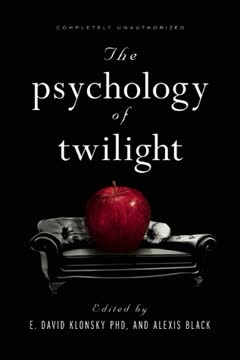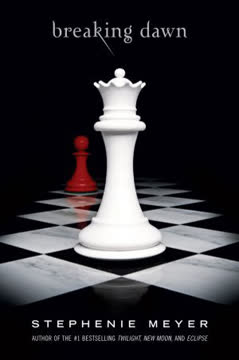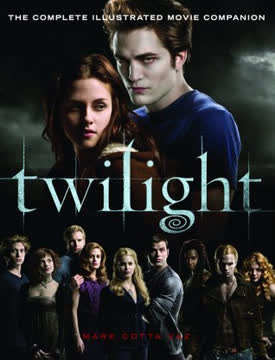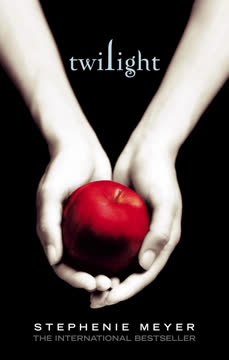Key Takeaways
1. Love and Attraction are Rooted in Biology
Bubbling below our conscious awareness are the rapid firings of neurons and swirling mixes of hormones that drive and shape our desires, thoughts, and behaviors.
Evolutionary forces. Our attractions aren't random; they're driven by biological systems shaped by evolution. Hormones, pheromones, and evolved preferences play a significant role in who we find desirable. These systems are designed to help us find mates who will produce healthy and robust offspring.
Scent of attraction. Body odor is a powerful source of attraction, containing information about hormone levels, fertility, and underlying genes. Studies show that people are attracted to the scents of symmetrical individuals and those with different MHC genes, indicating genetic compatibility. Edward's keen sense of smell allows him to detect these qualities in Bella.
Testosterone and masculinity. Women are often drawn to men who display traits associated with testosterone, such as muscularity. Jacob's toned body is a clear signal of masculinity, triggering evolved preferences in Bella's brain. However, Edward's initial series of dangerous and arousing events with Bella helped forge their love.
2. Evolutionary Psychology Explains Mate Selection
When we compare Edward and Jacob, it seems that Bella made a poor choice in picking Edward.
Mate selection criteria. Evolutionary psychology suggests that both sexes use instinctual criteria to select mates who maximize their ability to survive, reproduce, and care for offspring. Men typically seek physically attractive women who display signs of fertility, while women look for signs of strength, resources, and social status.
Jacob's advantages. Jacob possesses many qualities that make him an ideal mate from an evolutionary perspective. He is physically strong, a natural leader, and unfailingly loyal. He also has the ability to procreate, unlike Edward.
Bella's choice. Despite Jacob's advantages, Bella chooses Edward. This may be due to Edward's charm, mysteriousness, and the resources he offers. However, Bella's decision may also be influenced by her own insecurities and a tendency to make rash choices.
3. Prejudice Shapes Perceptions in Twilight
Just as there are good and bad vampires, there are also good and bad werewolves.
Implicit prejudice. Prejudice often operates beneath our conscious awareness, influencing our perceptions and behaviors in subtle ways. This implicit prejudice can be seen in the way characters in Twilight are associated with colors and animals.
Color associations. Vampires, typically associated with darkness, are instead linked to whiteness and purity in Twilight. Werewolves, on the other hand, are associated with darkness and animality. These associations reflect cultural stereotypes about race and morality.
Breaking stereotypes. Despite these associations, Meyer challenges stereotypes by portraying both good and bad vampires and werewolves. She also subverts the typical associations between black and white, making vampires cold and detached while werewolves are warm and protective.
4. Shared Goals Can Reduce Prejudice
With the simple introduction of a common foe, prejudices are set aside and historical enemies suddenly find themselves fighting side by side, vampires with werewolves, Edward with Jacob.
Competition for resources. Prejudice often arises from competition for scarce resources, such as land, money, or jobs. This can be seen in the historical conflict between vampires and werewolves in Twilight.
Superordinate goals. Prejudice can be reduced when opposing groups are forced to work together to achieve a common goal. In Eclipse, vampires and werewolves set aside their differences to defeat a shared enemy.
Team Edward vs. Team Jacob. The rivalry between Team Edward and Team Jacob fans demonstrates how easily groups can form based on minimal distinctions. This rivalry can even lead to hostility and prejudice.
5. Attachment Styles Influence Relationships
The behavioral changes that the main characters exhibit in the Twilight Saga support many key findings from attachment theory.
Attachment theory. Attachment theory suggests that early relationships with caregivers shape how we relate to others in adulthood. Securely attached individuals tend to have trusting and open relationships, while anxiously attached individuals may be clingy and insecure, and avoidant individuals may be distant and emotionally unavailable.
Edward's secure attachment. Edward's upbringing with the Cullens fostered a secure attachment style, characterized by trust and openness. However, his vampire nature sometimes leads to avoidant behavior.
Jacob's secure attachment. Jacob also has a secure attachment style, stemming from his loving relationship with his father and the wolf pack. However, his werewolf transformation also leads to periods of avoidant behavior.
6. Unreliable Behavior Fuels Passionate Love
So Edward’s secret dopamine-inspiring power could boil down to something remarkably simple: his sheer unreliability.
Dopamine and desire. Dopamine, a brain chemical associated with reward and motivation, plays a key role in attraction and love. It is released in response to rewarding experiences and cues that signal the arrival of something desirable.
Unpredictability and dopamine. Unpredictable behavior can increase dopamine responses, making the object of desire even more appealing. Edward's unreliability and mixed signals keep Bella on tenterhooks, fueling her intense longing for him.
The dopamine trap. This cycle of unpredictability and reward can create a perpetual state of longing, trapping individuals in relationships where they are never fully satisfied. Bella's brain becomes addicted to Edward, and the less she can have him, the more she wants him.
7. Fear and Arousal Intensify Attraction
The appeal of our favorite vampire is that, despite all of his bloodthirsty impulses and potential to be straight-up scary, his superhuman prefrontal cortex is capable of keeping his inhuman passions in check.
Misattribution of arousal. Arousal from fear or excitement can be misattributed to attraction, intensifying feelings of love. Bella's constant exposure to danger and Edward's protective actions fuel her attraction to him.
Novelty and arousal. Novel and arousing activities can also increase feelings of passionate love. Edward and Bella's relationship is constantly filled with exciting and extraordinary scenarios, keeping their love alive.
The appeal of control. Edward's ability to control his bloodthirsty impulses is also a source of attraction. The pairing of calming prefrontal activity with lustful dopamine spurting makes him tantalizing.
8. Dopamine Drives Desire and Longing
In short, our minds are programmed to want what is difficult to get, and Edward is superlatively unattainable.
The desire chemical. Dopamine is released in response to rewarding experiences and cues that tell us that something we previously found rewarding is on its way, nudging us to stop what we’re doing and chase after the delight-producing object.
Edward's unreliability. Bella is never sure how he will act toward her. In the first book he changes from minute to minute—first angry, then tender; disdainful, then fawning; disgusted, then flirtatious; guarded, then open, sensitive, even.
The ultimate act of capriciousness. In New Moon, Edward commits the ultimate act of capriciousness, abandoning Bella in a misguided attempt to save her soul. A well-meaning but inept experimental psychologist, he assiduously removes all the cues (books, CDs, tickets) that he thinks would remind her of him.
9. Self-Regulation is Key to Overcoming Temptation
He trades in short-term satisfaction for long-term happiness.
Self-regulation defined. Self-regulation is an invisible force within one’s personality structure that protects against excess. It dictates how one processes and reacts to information; if corralled effectively, self-regulation can help create the life one desires by significantly impacting how one thinks, feels, and behaves.
Edward's self-control. Edward is a master of self-control, able to resist his bloodthirsty impulses and protect Bella. He strengthens his self-regulatory capacity through mindfulness, graded exposure, and other techniques.
Bella's impulsivity. In contrast, Bella is often impulsive, driven by her emotions and desires. This impulsivity puts her in danger and complicates her relationship with Edward.
10. Risky Behavior Can Serve Protective Functions
Rather, many of these seemingly dangerous behaviors may actually help support and protect Bella through a psychologically difficult time.
Adolescent risk-taking. Risk-taking is common among teenagers, driven by developmental increases in reward-seeking and novelty-seeking. These behaviors can be adaptive, helping adolescents gain independence and skills.
Social benefits. Bella's risky behavior, such as riding motorcycles, allows her to deepen her friendship with Jacob and escape social isolation. Friendships provide emotional support, guidance, and increased self-worth.
Emotional benefits. Bella's risky behavior also helps her escape emotional pain and feel alive. It provides a distraction from her depression and a sense of control over her environment.
11. Family Dynamics Shape Individual Choices
In all cultures, the family imprints its members with selfhood.
Family systems theory. Family systems theory suggests that people learn how to interact with others within their families of origin, and these interaction patterns are repeated in relationships outside of the family.
The Cullen family. The Cullen family has a healthy hierarchical structure, with Carlisle and Esme as the heads of the household. They also have clear boundaries and strong alliances within the spousal subsystem.
The Swan family. The Swan family has an unbalanced hierarchy, with Bella taking on a parentified role. This can lead to negative consequences, such as depression, anxiety, and lower self-esteem.
12. Social Media Amplifies Emotional Engagement
The interconnected social world has forever changed fans’ relationships to stories, characters, authors, and each other.
Media and social convergence. The advent of social media has transformed how people share, connect, and communicate. It has blurred the lines between author, audience, and fans.
The Twilight phenomenon. The Twilight Saga's success is due in part to its ability to tap into the power of social media. Fans connect with one another, share their passion, and create vibrant communities.
New rules of social media. Social media is built on respect, trust, and authenticity. Meyer's accessibility and engagement with her fans helped propel the Twilight Saga to monumental proportions.
Last updated:
FAQ
What is The Psychology of Twilight by E. David Klonsky about?
- Scholarly analysis of Twilight: The book is a collection of essays by psychologists, edited by E. David Klonsky and Alexis Black, that explores the psychological dimensions of the Twilight Saga.
- Focus on characters and themes: It examines the inner lives, relationships, and development of characters like Bella, Edward, and Jacob through various psychological theories.
- Broader cultural impact: The book also discusses why Twilight resonates so deeply with readers, touching on themes like love, death anxiety, and fan culture.
- Not officially affiliated: While not an official Twilight product, it offers a unique, expert perspective for fans and those interested in psychology.
Why should I read The Psychology of Twilight by E. David Klonsky?
- Deeper understanding of Twilight: The book provides fans and newcomers with a richer appreciation of the saga’s characters, relationships, and underlying psychological themes.
- Expert psychological insights: Essays by psychologists use real theories and research to analyze love, attraction, prejudice, family dynamics, and more within the Twilight universe.
- Relatable life lessons: Readers gain insights into their own relationships, emotional experiences, and social behaviors through the lens of Twilight.
- Engaging and accessible: The essays are written to be both scholarly and accessible, making complex psychological concepts easy to understand for a general audience.
What are the key takeaways from The Psychology of Twilight by E. David Klonsky?
- Psychology behind Twilight’s appeal: The book reveals how evolutionary psychology, attachment theory, and other frameworks explain the saga’s intense relationships and fan devotion.
- Complexity of characters: It shows that Bella, Edward, and Jacob’s behaviors are shaped by deep psychological forces, not just supernatural elements.
- Family and social dynamics: The analysis of family systems and group prejudice offers new perspectives on the saga’s conflicts and alliances.
- Practical insights: Readers learn about self-regulation, impulsivity, and emotional growth, with lessons applicable to real-life situations.
How does evolutionary psychology explain love and attraction in The Psychology of Twilight by E. David Klonsky?
- Biological basis of attraction: The book explains that love and attraction in Twilight are rooted in evolved systems like neural firing, hormones, and sensory cues, especially scent.
- Genetic compatibility: Edward’s attraction to Bella’s scent is linked to the Major Histocompatibility Complex (MHC), signaling genetic diversity and health.
- Passionate love and arousal: The concept of “limerence” is used to describe the intense, aroused state of Bella and Edward’s relationship, fueled by danger and novelty.
- Evolutionary mate selection: The essays discuss how both Bella’s and the male characters’ choices reflect, and sometimes defy, evolutionary predictions about mate selection.
What arguments are made for Team Edward and Team Jacob in The Psychology of Twilight by E. David Klonsky?
- Team Jacob’s evolutionary strengths: Jacob is portrayed as the biologically superior mate—strong, loyal, socially dominant, and able to father children—aligning with evolutionary criteria.
- Team Edward’s unique appeal: Edward’s physical symmetry, scent, and self-control make him highly attractive, with his unpredictability triggering addictive dopamine responses in Bella.
- Individual quirks and narrative needs: The book suggests Bella’s choice is influenced by her own personality traits and the story’s narrative, not just evolutionary logic.
- Complexity of attraction: Both characters offer different psychological and biological advantages, reflecting the saga’s nuanced approach to love and desire.
How does attachment theory help explain the relationships in The Psychology of Twilight by E. David Klonsky?
- Attachment styles defined: The book uses secure, anxious, and avoidant attachment styles to analyze the behaviors of Edward, Jacob, and Bella.
- Supernatural complications: Both Edward and Jacob show avoidant tendencies due to their supernatural natures, despite secure family attachments.
- Bella’s responses: Bella’s reactions to their distancing reflect her own attachment security and confusion, highlighting the interplay of personality and circumstance.
- Similarities between rivals: The analysis concludes that Edward and Jacob share more attachment similarities than differences, complicating the Team Edward vs. Team Jacob debate.
What is the role of self-regulation and impulsivity in The Psychology of Twilight by E. David Klonsky?
- Edward’s self-control: Edward exemplifies superhuman self-regulation, managing his vampire urges and emotional challenges through mindfulness and other psychological strategies.
- Bella’s impulsivity: Bella is characterized by a dominant “hot” emotional system, leading to risk-taking behaviors and short-term thinking, especially during emotional distress.
- Relationship dynamics: The contrast between Edward’s self-control and Bella’s impulsivity creates tension and growth in their relationship.
- Practical strategies: The book details Edward’s use of mindfulness, graded exposure, and cognitive techniques to strengthen his self-regulation.
How does family systems theory apply to the Swan and Cullen families in The Psychology of Twilight by E. David Klonsky?
- Family as a system: The book analyzes both families using family systems theory, focusing on hierarchies, boundaries, and alliances.
- Cullen family strengths: The Cullens have a balanced, supportive structure that fosters emotional and social stability, despite their vampire nature.
- Swan family challenges: The Swan family exhibits imbalanced hierarchies and blurred boundaries, with Bella often taking on inappropriate caregiving roles.
- Impact on Bella: These family dynamics shape Bella’s independence, anxiety, and romantic relationships.
What is parentification, and how does it affect Bella in The Psychology of Twilight by E. David Klonsky?
- Definition of parentification: Parentification occurs when a child takes on caregiving roles for parents, both emotionally and instrumentally, which is developmentally inappropriate.
- Bella’s experience: Bella is parentified with both her mother Renee and father Charlie, leading to stress and a sense of responsibility beyond her years.
- Effects on development: This dynamic fosters Bella’s independence but also contributes to anxiety, guilt, and challenges in her relationship with Edward.
- Breaking the cycle: The book notes that Bella’s new family with Edward appears healthier, suggesting hope for breaking intergenerational patterns.
How does The Psychology of Twilight by E. David Klonsky address prejudice and group dynamics?
- Implicit prejudice in Twilight: The book discusses how color and racial associations in the saga tap into deep-seated cultural stereotypes, with vampires portrayed as pale and pure, and werewolves as darker and animalistic.
- Competition and conflict: Prejudice is shown to arise from competition for resources, mirroring real-world group dynamics.
- Overcoming prejudice: Twilight demonstrates that shared goals, such as uniting against a common enemy, can reduce intergroup hostility.
- Fan group dynamics: The formation of “Team Edward” and “Team Jacob” among fans illustrates minimal group prejudice in real life.
How does The Psychology of Twilight by E. David Klonsky explore death anxiety and the appeal of transcendence?
- Love as escape from mortality: Bella’s love for Edward is interpreted as a desire to transcend death and human limitations, with the promise of immortality.
- Religious parallels: The book draws connections between vampire transformation and religious concepts like transubstantiation, offering secular hope for eternal life.
- Psychological resonance: The saga’s portrayal of love as a shield against death anxiety deeply resonates with readers, fulfilling a universal need for meaning.
- Emotional impact: This theme helps explain the saga’s enduring appeal and emotional intensity.
What role does social media and fan culture play in the Twilight phenomenon, according to The Psychology of Twilight by E. David Klonsky?
- Transforming fandom: Social media enabled direct, authentic interaction between Stephenie Meyer and fans, creating a participatory culture.
- Community and belonging: Online fan communities provide validation, support, and a sense of belonging, turning isolated readers into connected networks.
- Psychological benefits: Participation in these communities enhances well-being, positive emotions, and empowerment, helping fans cope with real-life challenges.
- Broader cultural impact: The book situates Twilight’s fan culture within larger trends in media, marketing, and social connection.
Review Summary
The Psychology of Twilight received mixed reviews, with an average rating of 4.52 out of 5. Many readers found it interesting and insightful, appreciating the psychological analysis of the Twilight saga. Some praised specific chapters on topics like relationships and social media. However, others felt it was cumbersome or pointless. Critics noted inconsistent quality across chapters and questioned the intended audience. Overall, fans of both psychology and Twilight generally enjoyed the book, while others found it less engaging or relevant.
Similar Books
Download PDF
Download EPUB
.epub digital book format is ideal for reading ebooks on phones, tablets, and e-readers.











